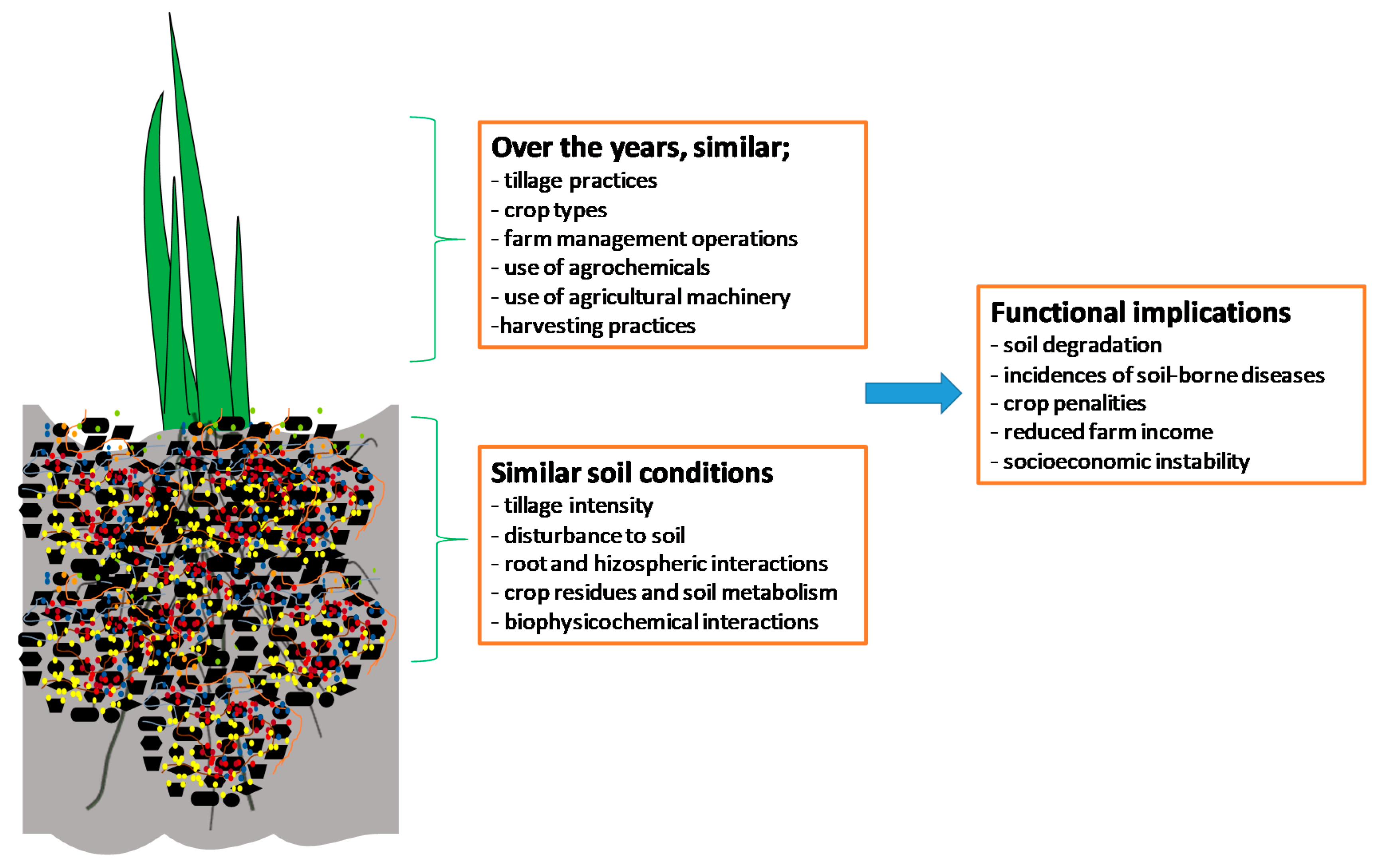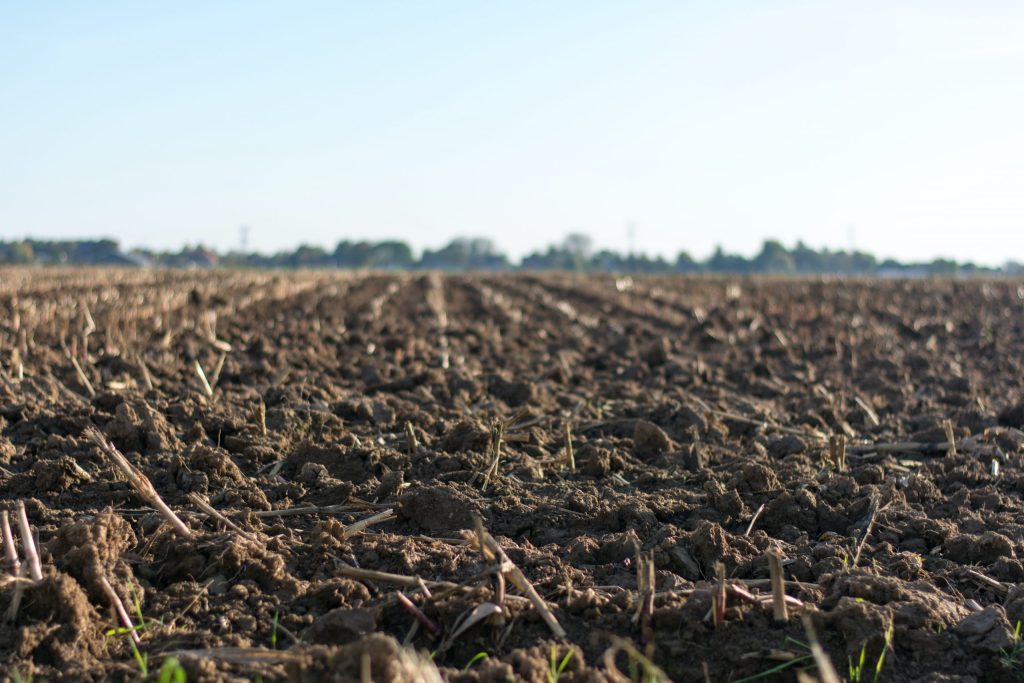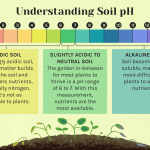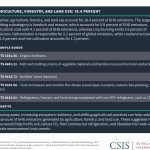Have you ever wondered why the vegetables in your local grocery store seem to taste less vibrant than they did years ago? Or why farmers are constantly battling against pests and diseases?
The answer might lie in a farming practice called mono-cropping. If you’ve noticed these changes, it’s time to dig deeper into how continuous mono-cropping is impacting the soil beneath our feet. This practice, where the same crop is planted year after year on the same land, might be convenient and cost-effective in the short term, but it comes with hidden consequences that could affect your food quality and the environment.
By understanding this impact, you can make more informed choices about the food you eat and the farming practices you support. Prepare to uncover how this agricultural method could be silently draining the life from the soil, and discover what it means for your future and the planet’s health.

Soil Health Decline
Continuous mono-cropping damages soil health, reducing essential nutrients and disrupting natural balance. It leads to decreased crop yields, increases vulnerability to pests, and ultimately threatens long-term agricultural sustainability.
### Soil Health Decline Continuous mono-cropping is like a relentless marathon for the soil. Imagine running every day without rest; your body would eventually wear out. Similarly, soil needs diversity and rest to thrive. Over time, mono-cropping can lead to a significant decline in soil health. This decline affects not just the farm but the ecosystem that depends on it. The soil becomes less fertile, and yields decrease. You may find yourself asking, “Is my farming practice sustainable in the long run?” ###Loss Of Nutrients
With mono-cropping, the soil loses vital nutrients. Each crop type has specific nutrient needs and depletes the soil of those nutrients. You might notice your fields require more fertilizers over time. This added cost could eat into your profits. What steps can you take to replenish these nutrients naturally? ###Reduced Organic Matter
Mono-cropping reduces organic matter in the soil. Organic matter is crucial for soil structure and fertility. It’s like the bedrock of a healthy farm ecosystem. Without it, the soil becomes compacted and less able to hold water. You might see runoff increase, taking precious topsoil with it. How can you boost organic matter without disrupting your current practices? ###Impaired Soil Structure
The repeated cultivation of the same crop can impair soil structure. Healthy soil has a mix of air and water spaces, supporting plant growth. Continuous mono-cropping disrupts this balance, leading to compacted soil. Compacted soil struggles to support plant roots and retain moisture. Could diverse cropping systems improve soil structure on your farm? ###Soil Erosion
Mono-cropping can accelerate soil erosion. Without diverse root systems to anchor the soil, it becomes vulnerable to wind and water. You might have noticed more erosion on your property over time. This loss of topsoil is like losing the vital nutrients and minerals your crops need. What measures could you implement to protect your soil from erosion? ###Increased Pest And Disease Pressure
Continuous mono-cropping can lead to increased pest and disease pressure. Pests adapt to the predictable environment, and diseases can thrive without crop rotation. You might find yourself battling the same issues year after year. Are there natural pest control methods that can reduce this pressure? ###Practical Steps To Improve Soil Health
Improving soil health requires actionable steps. Introducing crop rotation can replenish nutrients and disrupt pest cycles. Consider cover cropping to add organic matter and protect against erosion. You can also explore composting to enrich your soil naturally. What changes can you make today to ensure healthier soil tomorrow? In tackling these challenges, consider how each decision impacts your farm’s future. Soil health is not just about increasing yields; it’s about creating a sustainable environment for generations to come.Nutrient Depletion
Continuous mono-cropping harms soil health by depleting essential nutrients. This practice reduces soil fertility, affecting crop yield and quality. Sustainable farming methods can help restore balance.
Continuous mono-cropping, or growing the same crop on the same land year after year, has significant impacts on soil health. One of the most pressing issues is nutrient depletion. This phenomenon occurs because the same nutrients are repeatedly extracted from the soil, leading to a gradual decline in soil fertility. As a result, farmers may experience reduced yields and may need to use more fertilizers to maintain productivity. This cycle not only affects the land but also increases farming costs and impacts the environment.What Is Nutrient Depletion?
Nutrient depletion happens when plants absorb essential elements from the soil, like nitrogen, phosphorus, and potassium, faster than they can be naturally replenished. Imagine a bank account where you continually withdraw money without making any deposits. Eventually, the account runs dry. Similarly, the soil becomes less fertile over time, lacking the necessary nutrients to support plant growth.Signs Of Nutrient Depletion
Recognizing nutrient depletion can be tricky. You might notice stunted plant growth or yellowing leaves, which could hint at nutrient deficiencies. These signs often prompt farmers to apply synthetic fertilizers. However, without addressing the root cause, these quick fixes can lead to a vicious cycle of dependency, further degrading soil quality.Why Is Nutrient Depletion A Problem?
Nutrient depletion doesn’t just affect crop yields; it impacts the entire ecosystem. Poor soil health can lead to erosion, where precious topsoil is lost. You might find that water retention is reduced, leading to more frequent drought conditions. The use of chemical fertilizers to combat these issues can pollute water bodies, harming aquatic life and affecting water quality.Practical Solutions For Combating Nutrient Depletion
There are actionable steps to mitigate nutrient depletion. Crop rotation is a simple yet effective strategy. By planting different types of crops in succession, you can naturally replenish soil nutrients. Another method is cover cropping, where non-cash crops are planted to protect and enrich the soil during off-seasons. Composting organic matter can also improve soil structure and fertility.Have You Ever Considered The Impact Of Continuous Mono-cropping?
Think about your own gardening or farming experiences. Have you noticed changes in soil quality after planting the same crop repeatedly? Reflecting on these practices can lead to more sustainable farming methods. What changes can you make today to ensure the soil remains healthy for future generations? The challenge lies in balancing immediate agricultural needs with long-term soil health. By making small changes, you can contribute to a more sustainable and productive environment.Increased Soil Erosion
Continuous mono-cropping has a significant impact on soil health. One major concern is increased soil erosion. This happens when the same crop is grown repeatedly. The soil loses its structure and becomes weak. Erosion removes the top fertile layer. This makes it harder for plants to grow. It also affects water retention and nutrient availability. Let’s explore the factors contributing to this erosion.
Loss Of Soil Structure
Mono-cropping damages soil structure. Without plant diversity, roots don’t hold the soil well. The soil becomes loose and prone to erosion. Rain and wind easily wash it away. This leads to a loss of nutrients and fertility.
Decreased Organic Matter
Organic matter is crucial for soil health. It helps maintain soil structure. Continuous mono-cropping reduces organic matter. Without it, the soil can’t bind together. Erosion becomes more severe.
Reduced Vegetative Cover
Different crops offer varied vegetative cover. Mono-cropping lacks this diversity. The soil remains exposed to natural forces. This exposure increases erosion risks significantly.
Increased Water Runoff
Healthy soil absorbs water well. Mono-cropping reduces this ability. Water runoff increases, carrying soil away. This process depletes soil fertility over time.

Threats To Biodiversity
Continuous mono-cropping harms soil health by depleting nutrients, reducing biodiversity, and increasing vulnerability to pests. This practice disrupts natural soil cycles, leading to erosion and lower crop yields over time. Sustainable farming techniques are crucial to restore soil vitality and preserve ecosystem balance.
Continuous mono-cropping, a practice where farmers grow the same crop year after year in the same soil, poses significant threats to biodiversity. This method can lead to a reduction in the variety of plant and animal life, which is essential for a balanced ecosystem. Biodiversity is crucial for soil health, and its decline can result in poorer crop yields and increased vulnerability to pests and diseases.Loss Of Habitat
Mono-cropping limits habitat diversity. When you drive past endless fields of the same crop, you witness the loss of varied plant life. This not only affects plants but also the animals and insects that rely on them for food and shelter. Imagine a garden with only roses; it lacks the space for bees and butterflies that thrive on diversity.Soil Depletion
Repeated planting of the same crop can strip the soil of essential nutrients. You might notice how your garden struggles if you plant the same vegetable year after year without replenishing the soil. This depletion harms beneficial microbes, essential for nutrient cycling and soil fertility. How can our crops thrive if the very foundation they grow in is weakening?Increased Pest Resistance
Mono-cropping can lead to pest resistance. When pests feed on the same crop annually, they adapt and become harder to control. Think about how your favorite video game becomes challenging as you progress. Pests become more resilient, requiring stronger chemicals, which further disrupts biodiversity.Reduced Genetic Diversity
A lack of crop variety can reduce genetic diversity. By planting only one type of crop, you limit the genetic pool that can resist diseases and adapt to climate changes. Consider your wardrobe; a variety of outfits prepares you for different weather. Crops need genetic diversity to withstand environmental shifts and diseases.Disruption Of Natural Cycles
Mono-cropping disrupts natural cycles, affecting both soil and water. Without diverse plants to balance the ecosystem, water retention decreases, leading to erosion. Remember the last time you saw a barren hillside after a storm? The absence of varied vegetation fails to hold the soil together, causing sediment runoff. Do you think your farming practices could be contributing to these issues? Consider the broader impact on biodiversity and explore alternatives like crop rotation or polyculture. By making small changes, you can play a part in preserving the biodiversity that sustains our planet.
Conclusion
Continuous mono-cropping harms soil health. Nutrients deplete, reducing crop yields. Soil becomes compact, making water absorption difficult. This practice increases pest and disease risks. Farmers face declining productivity over time. Healthy soil needs diverse crops. Rotation helps restore balance and fertility.
Sustainable farming practices protect soil and food security. Consider adopting crop rotation strategies. Your soil will thank you. Future generations will benefit too. Sustainable agriculture is key. Let’s nurture our soil wisely.



